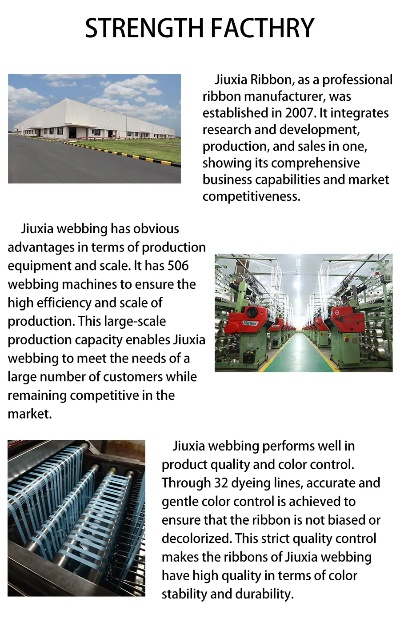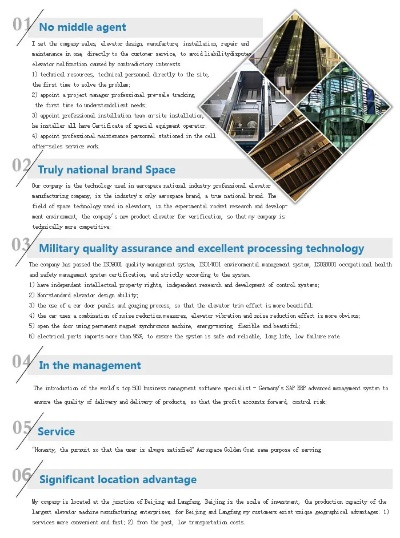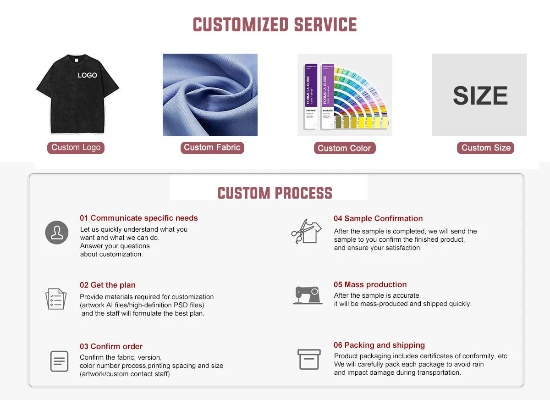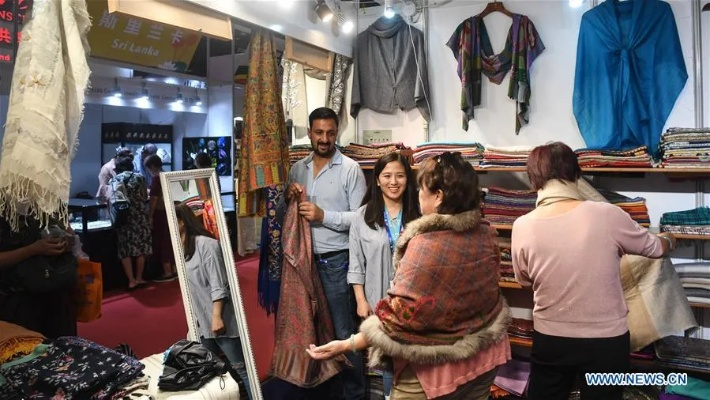The Advantages and Disadvantages of Textiles Export
Textiles have long been a significant part of global trade, with exported goods representing a vital component of economic growth and development. The advantages of textile exports are multifaceted, including the creation of jobs in emerging economies through the provision of low-cost labor, the promotion of local industries, and an increase in domestic consumption. Furthermore, textile exports provide a significant source of foreign exchange for countries that rely heavily on imports, contributing to their balance of payments. Additionally, the exportation of textiles can lead to increased international competitiveness and technological advancement within the sector. However, there are also potential drawbacks associated with textile exports, including concerns about environmental impacts due to overuse of water and chemicals, as well as the exploitation of cheap labor in developing nations. Despite these challenges, the continued export of textiles is critical to sustaining global markets and fostering economic stability.
In this day and age, the globalization of trade has given rise to a significant number of industries. One such industry is textiles, which are essential components of our daily lives. Textiles are used in various sectors, including fashion, home furnishing, industrial use, etc. However, exporting these products has its own set of advantages and disadvantages that businesses need to consider. In this essay, we will discuss these aspects in detail.

Advantages of Textiles Export:
-
Market Expansion: One of the primary benefits of exporting textiles is gaining access to new markets. With an increase in demand for textiles in different parts of the world, exporting can help your business expand into new regions. For instance, India, which produces textiles at a large scale, exports to countries like China and the United States. By expanding into these markets, companies can increase their revenue and profitability.
-
Strategic Partnerships: Exporting textiles can also lead to strategic partnerships with international companies. These partnerships can be beneficial for both parties because they can exchange ideas, technology, and expertise. For example, one company might export high-quality fabrics while another company might import finished textiles for their own manufacturing processes. Such collaborations can result in mutual benefit and growth.
-
Competitive Edge: When exporting textiles, it allows you to compete with other manufacturers in foreign countries. By producing competitive goods at low costs, you can offer better deals to your customers, which can lead to increased sales and brand recognition. For instance, a company from Bangladesh, known for producing cheap and quality clothing, can compete with established brands in Western countries.
Disadvantages of Textiles Export:
-
Quality Control: One of the most significant challenges of exporting textiles is maintaining high quality standards in different countries. Different regulations and standards may affect the quality and safety of products during the manufacturing or transportation process. For instance, some countries have tighter requirements for environmentally friendly materials and production methods. If these standards differ from your local practices, it can result in delays or failures in shipments.
-
Cost of Exporting: Exporting textiles can be expensive due to additional logistics, transportation costs, and customs clearance procedures. Moreover, if the product fails to meet the standards of certain countries, you might have to pay additional fees or face penalties. For example, when a US company failed to comply with Chinese labor laws, they were fined by the Chinese government for violating labor rights.
-
Risk of Devaluation: Another disadvantage of exporting textiles is the risk of currency devaluation. When foreign currencies decrease in value against local currencies, it can negatively impact the cost of production and profitability. This can lead to increased costs for exporters who must pay higher prices for raw materials and shipping. For example, when the Indian rupee fell against the dollar, many exporters had to pay more for goods than expected, leading to reduced profits.
Case Studies:
One successful case study is the export of Indian sarees to Europe. Saree is a traditional garment from India that is highly valued in the West. Many European countries have strict requirements for the quality and design of sarees. To meet these standards, exporters need to invest in advanced machinery and training programs. As a result, many Indian saree manufacturers have successfully entered the European market, increasing their revenue and reputation.

Another case is the export of Chinese silk to North America. Silk is a valuable textile material that is highly demanded in Canada and the US. However, exporters must ensure that they follow all necessary regulations and standards to avoid any legal issues or penalties. For example, the U.S. Department of Agriculture (USDA) requires that all imported silk products undergo strict quality control measures before being sold in the US. By doing so, exporters can build trust and gain market share in North America.
Conclusion:
In conclusion, exporting textiles has its own set of advantages and disadvantages that businesses need to consider. While expanding into new markets and forming strategic partnerships can bring about growth opportunities, ensuring quality control and compliance with regulations and standards is crucial to avoid financial losses. Case studies show that successful exporting requires proper planning, investment in machinery, and adherence to strict guidelines. Therefore, businesses should thoroughly evaluate the potential risks and benefits of exporting textiles before making a decision on how to proceed with their export strategy.
随着全球贸易的不断发展,纺织品出口已成为各国经济贸易的重要组成部分,本文将通过表格和案例分析,探讨纺织品出口的利弊,帮助读者更好地了解这一领域。
纺织品出口的利
贸易增长:纺织品作为全球性商品,市场需求持续增长,各国纷纷加大纺织品出口力度,促进贸易增长。
| 项目 | 描述 |
|---|---|
| 纺织品出口增长率 | 高 |
| 市场需求 | 不断增长 |
| 经济效益 | 带来外汇收入、就业机会等 |
成本效益比高:纺织品出口具有成本效益比高的特点,相较于其他商品,纺织品生产周期短、成本低,能够满足不同国家和地区的消费需求。
纺织品出口的弊
国际贸易环境复杂:纺织品出口涉及多个国家和地区的贸易关系,国际贸易环境复杂多变,这增加了出口风险和不确定性。

| 项目 | 描述 |
|---|---|
| 国际贸易环境复杂性 | 高 |
| 贸易壁垒与关税政策 | 可能存在贸易限制和关税壁垒 |
| 市场准入与竞争压力 | 需要应对不同国家和地区的竞争压力 |
质量与安全风险:纺织品出口涉及质量与安全问题,需要严格把控产品质量和安全标准,否则可能面临法律风险和消费者投诉。
案例分析
以某纺织品出口企业为例,介绍其在纺织品出口过程中的具体做法和经验。
-
企业背景:该企业是一家专注于纺织品出口的企业,拥有先进的生产设备和技术,注重产品质量和安全标准。
-
产品特点:该企业主要出口高品质、高附加值的纺织品,满足不同国家和地区的消费需求。
-
出口策略:该企业采取多元化市场策略,积极拓展国际市场,提高品牌知名度和市场占有率,加强与国内外供应商的合作,提高供应链效率。
-
成功经验:该企业在纺织品出口过程中,注重产品质量和安全标准的把控,加强与国际市场的沟通与合作,提高市场适应能力和竞争力,还注重环保、可持续性等方面的考虑,符合当前绿色贸易的趋势。
纺织品出口具有贸易增长、成本效益比高等优点,同时也面临国际贸易环境复杂、质量与安全风险等不利因素,为了更好地开展纺织品出口业务,企业需要加强产品质量和安全标准把控,提高市场适应能力和竞争力,还需要加强与国际市场的沟通与合作,积极应对国际贸易环境的变化,还需要关注绿色贸易趋势,符合可持续发展要求,通过合理的策略和措施,企业可以更好地开展纺织品出口业务,实现贸易增长和经济效益的提升。
Articles related to the knowledge points of this article:
The Story of the佛山市南海区池万绿纺织品批发部
The Story of Xian Xinyucheng Mengrou Textile Wholesale Shop
Understanding Japanese Textile Standards A Comprehensive Guide
The Best Eco-Textile Certification Companies to Consider
A Comprehensive Guide to Renowned Ruijin Bokang Home Textiles



